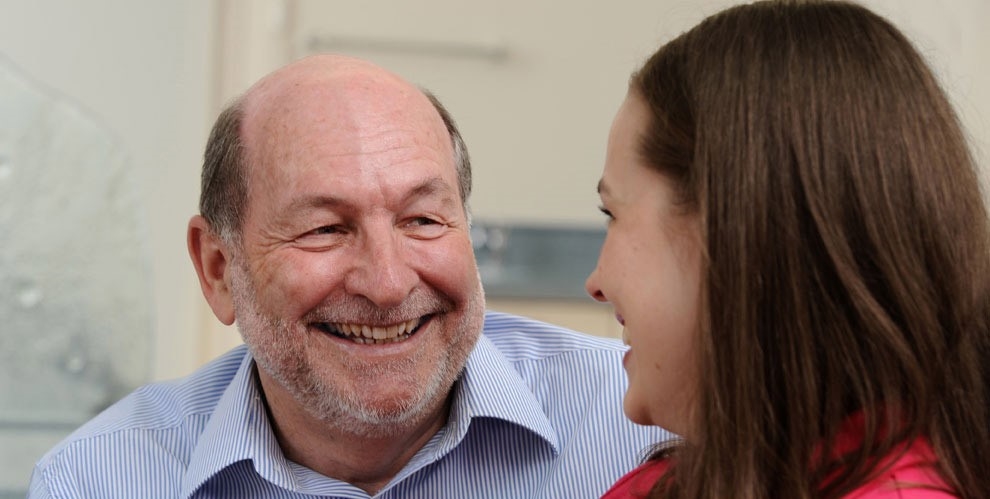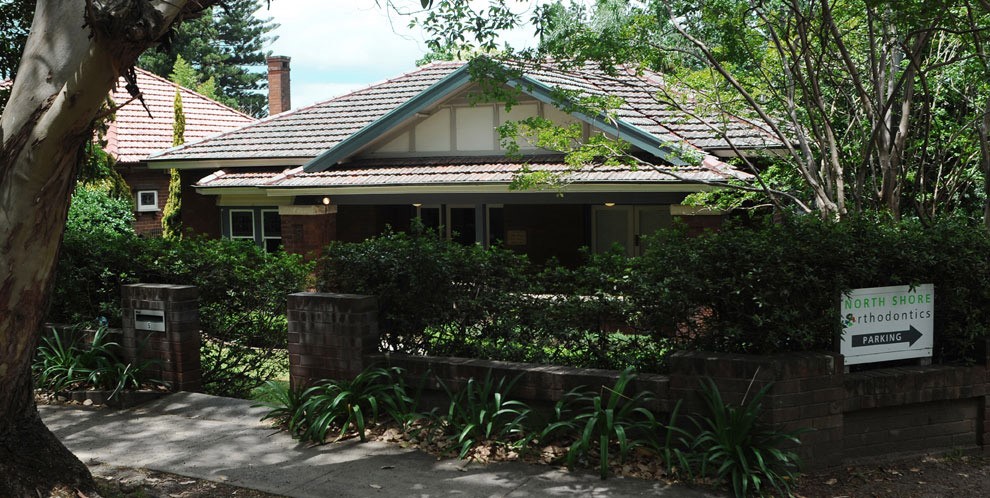What is Orthodontics?
Orthodontics is about how you grow facially, how this functions and how good you look. It is so much more than just straightening teeth!
Orthodontic treatment deals with the diagnosis, prevention and treatment of problems associated with the growth and alignment of teeth and jaws within the overall facial structures.
Treatment involves the design and use of corrective orthodontic appliances, such as braces, aligners, expanders, headgear, functional appliances and even surgery, to bring the teeth and jaws into an improved alignment with the facial structures.
Your smile is with you for life. It not only enhances your health and appearance, it also adds self-esteem and confidence.
Orthodontics is a smart investment in your dental, physical and emotional health.
Why see a Specialist?
To have the best smile that you can have.
We all want to look our best and that includes having the best smile that we can have. Teeth, and sometimes entire facial structures, are permanently changed by orthodontic treatment. And that is why you want the most qualified person with the most expertise to create your smile or correct your bite.
As specialist orthodontists we have the knowledge and expertise to diagnose, prevent and treat problems that relate to your facial appearance and alignment of your teeth. We use our expertise to create and retain your new smile.
As orthodontists we have professional skill in the design, application and control of all corrective orthodontic appliances. We have the expertise to discuss with you what treatment is appropriate and when it is best to do it.
In Australia orthodontists are government certified specialists and must:
- Complete an AHPRA registered general dental degree;
- Have at least two years of general dental clinical experience;
- Complete an accredited three year university specialist degree in orthodontics;
- Register as a specialist in orthodontics with the Australian Health Practitioner Regulation Agency (AHPRA).
AHPRA allows for an easy search of any practitioner's registration status.
What is the right age for Orthodontics?
The right age to commence orthodontic treatment is as individual as you are. In determining that age, consideration is given to the treatment's final result and stability, its duration and your comfort during our care.
Since no two patients are the same, there is not a specific age that is best to begin treatment. It is highly dependent upon the particular orthodontic problem, the individual's pattern of maturation and the physical, mental and emotional development of the patient. We recommend an initial assessment between 8 and 10 years of age so that treatment can be started at just the right time.
In some patients, orthodontic treatment is best commenced around age 9 so that we can guide facial growth and tooth eruptions to reduce the severity of the problem and enhance the final treatment results in their teens.
Most orthodontic problems are best treated when all the baby teeth are lost, the adult teeth have erupted and you are still actively growing. This is usually around 12 to 15 years of age, however, some may start earlier if they are early growers while others with excessive growth may need to wait until their growth has slowed.
Many adults suffer with orthodontic problems because they think that they are too old to have them corrected and that their teeth won't move. Non growing adults can still benefit from orthodontic treatment as there is no age limit on when we can move teeth and improve your bite and your smile.
Smiles for Children
The Australian Society of Orthodontics recommends a first orthodontic assessment between the age of 8 and 10.
The early screening of children for the detection and diagnosis of any anomalies can be of huge benefit to the treatment of orthodontic problems, even if only to identify the ideal time for any future care.
Treatment may often not begin at this early age, but the child’s growth and development can be recorded and monitored so that treatment can be started at just the right time. Sadly we see far too many children too late in their development to be able to give them our optimal care. For this reason we encourage you to seek an opinion early and if no early treatment is required we will monitor their growth and development at no extra charge.
Early Phase or Interceptive Treatment for those children, where there is a clear indication for care, presents the opportunity to improve or correct:
- Upper jaw constrictions - expansion is best achieved early;
- Anterior cross bites - distraction is best completed before the age of 10;
- Preserve or gain space for permanent teeth - especially important where baby teeth have been lost early;
- Severe crowding - which can sometimes be minimised;
- Reduce the risk of front tooth damage – reduce protrusion of severely protruded teeth;
- Minimise tooth damage from traumatic bites - front teeth erupting in a cross bite;
- Minimise soft tissue damage from traumatic bites - lower teeth biting into the palate;
- Influence jaw growth and development in a positive manner - correcting cross bites usually restores facial symmetry;
- Harmful oral habits - such as thumb sucking;
- Speech problems - where indicated and usually in conjunction with a speech pathologist;
- Aesthetics - where self-esteem is a concern.
This early phase treatment is most often commenced between the ages of 8 and 10 years. Children of this age have a good growth potential, are usually highly compliant and cope extremely well with treatment. Early treatment usually lasts 6 to 12 months, after which we will normally monitor your child’s growth and development until the eruption of the adult teeth. At this time consideration is given to the need for any further care. Most children who have an early phase of orthodontic treatment will require a more comprehensive phase of treatment in their early teen years to create a more stable, functional and aesthetic result. This more complete phase of treatment usually involves wearing braces.
Early care with functional or myofunctional appliances, where claims of long term significant growth changes are made, have no proven scientific support. While these appliances can alter tooth position, there is little significant skeletal change. Patients treated with these appliances will normally require comprehensive care again during adolescence.
If you have any concerns regarding your child’s dentofacial growth and development, seek an early specialist opinion.
Smiles for Teens
The teenage years are the ideal time for orthodontic care as this is most often when all the adult teeth are present and the jaws are still growing.
Having treatment in your teens lets us take advantage of the natural growth that is happening. This usually means quicker, more efficient and stable treatment results.
Most treatment at this time involves the wearing of fixed braces for about eighteen months. Sometimes aligners, expanders, headgears and other appliances form part of the treatment plan.
The teenage years can be challenging enough without feeling self-conscious about crooked teeth or unbalanced jaws. No longer do teenagers feel embarrassed or uncomfortable about wearing orthodontic appliances as in recent years there has been a significant increase in their use. And the resulting beautiful smile can certainly help boost confidence and self-esteem.
Smiles for Adults
You're never too old to improve your smile. We regularly treat patients in their 50s, 60s and 70s as more and more adults discover the benefits of orthodontic treatment later in life.
Most adults understand that improving the appearance of their smile can have a positive effect on their personal, social and professional lives.
Although adults have finished their growth spurts, this does not preclude orthodontic treatment. Teeth move in a similar manner at any age as long as the teeth are healthy and have good bony support.
Some adults simply want straight teeth, others want to have cleaning made easier to improve the overall health of the teeth and gums, while others want to improve function. Many require a collaborative effort between their dentist or other dental specialists to achieve optimal restorative and reconstructive treatment plans. These specialised plans may involve implants, periodontal issues and ever increasing surgical intervention. This multi-disciplinary treatment planning is what makes adult orthodontics both challenging and so rewarding at the same time.
Your specialist orthodontist will advise you as to the most appropriate treatment and appliance options available to you during your consultation. We have a wide range of orthodontic appliances for adult patients including tooth coloured braces, invisible braces (lingual braces on the inside of the teeth) and clear removable aligners called Invisalign. Major changes can now days also be made using small skeletal anchors, as well as more dramatic cosmetic changes with surgical orthodontics.
Tom Ford celebrating 15 years with Vogue listed the 15 most important things you need to look great. This list included ‘a great smile’, take Tom Ford’s advice:
'Perfect teeth - if you don't have them, save up and have them fixed.'







